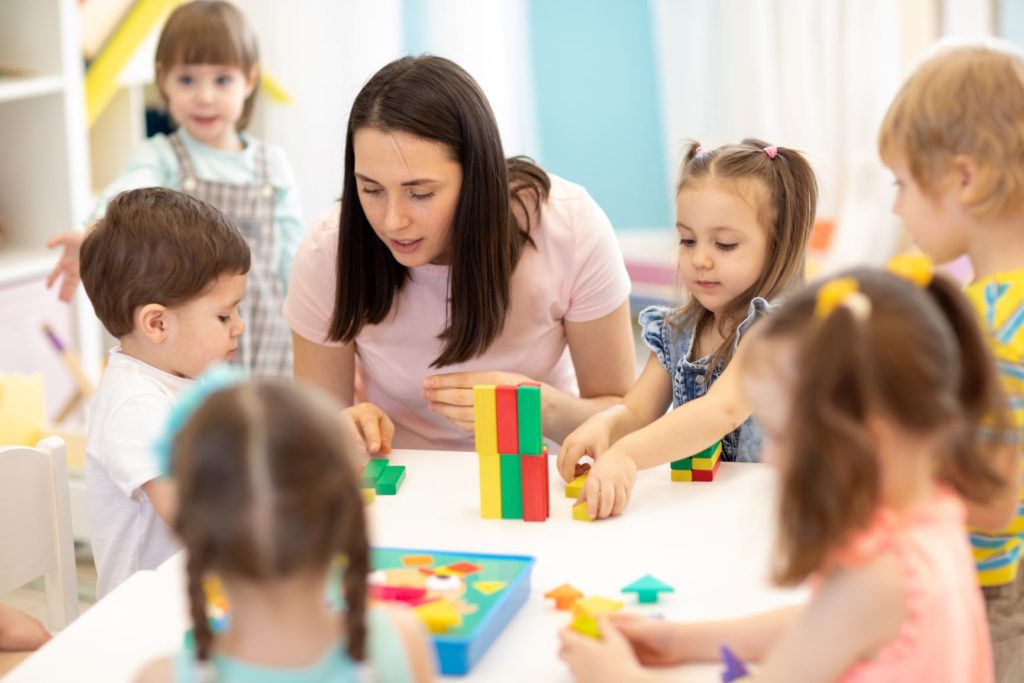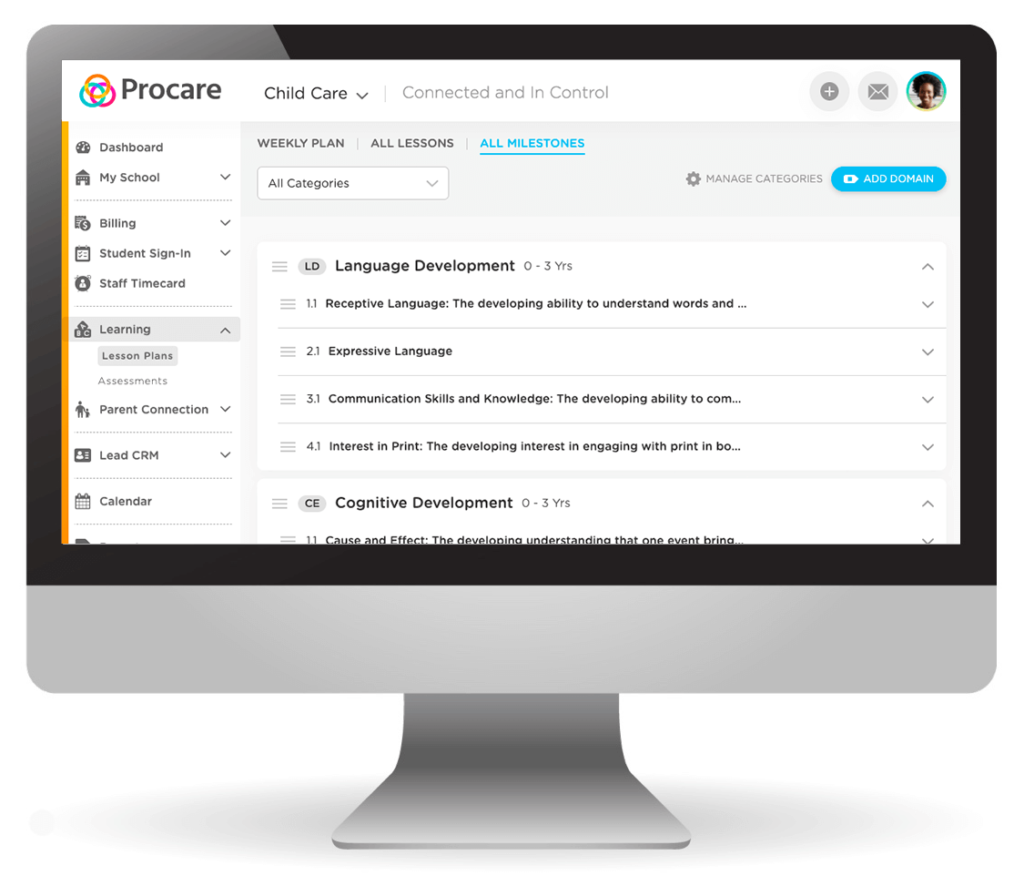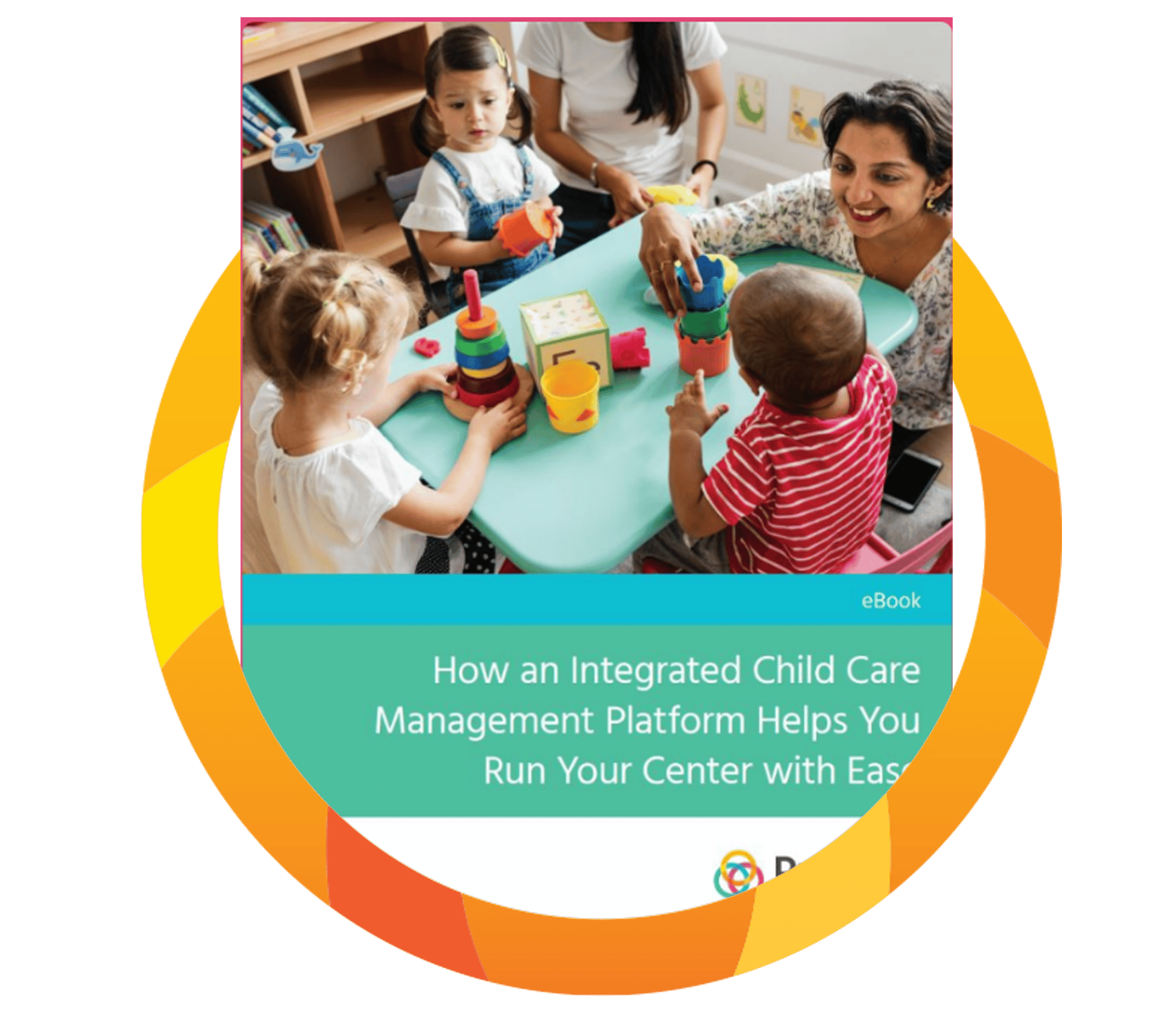
Leading a classroom full of energetic preschoolers can be exhilarating and challenging at the same time. Directing all that pent-up energy into your planned lessons and activities is a key skill of an early childhood educator. To help children be their most productive and get everything they can out of preschool, you need to apply classroom management strategies.
With confidence and preparation, you can model good behavior, teach appropriate consequences and guide your kids through disruptions with ease. Read on to learn what classroom management is, why it’s important and our 12 top preschool classroom management strategies for your classroom.
What is Preschool Classroom Management?
Classroom management means all the tools and activities that you use as an educator to keep your kids focused, on-task, engaged, organized and behaving appropriately during your lessons. This can encompass everything from your body language, to time management strategies, to classroom discipline, to visual aids and tools like posters and sticker charts.
Most teachers develop their own classroom management strategies over time, and no two teachers’ approaches to classroom management look exactly alike. Regardless, there are some well-tested principles that all teachers can apply to make sure their classrooms remain orderly. We’ll talk about those below, but first, we’ll look at what makes classroom management so important for toddlers and preschoolers.
Why is Classroom Management Important?
A well-managed classroom with attentive and orderly kids gives teachers peace of mind. But much more than that, it’s the environment kids need to be at their best. When your preschool classroom is organized, it’s a place where kids can learn and grow cognitively, socially and emotionally without disruptions. That means better outcomes and happier kids.
Preschool classroom management strategies are also crucial to ensuring child safety. Running and other disruptive behaviors present a safety hazard in the classroom. When kids are always where you expect them to be, with their hands to themselves and moving steadily, you can supervise them closely, prevent accidents and stop conflict before it starts.
12 Preschool Classroom Management Strategies to Support Learning

Model Ideal Classroom Behaviors
Good behavior in the classroom starts with you. Children look to adult role models to set their cues, so if you want your kids to be respectful, engaged and positive, the best way to show them what that means is by being a good example. Kids will take your expectations much more seriously when they know that you practice what you preach and don’t ask anything from them that you wouldn’t from yourself.
Get Kids Involved in Creating Rules
Letting kids help come up with classroom rules is an excellent way to teach expectations in a memorable way. It lets kids get excited about rules, rather than feeling restricted, and helps reinforce the reasons behind the guidelines. When kids are allowed to help set the standards for their own behavior, they will naturally feel a sense of ownership over their classroom culture, and take pride in embodying the good behavior you expect.
Set Clear Expectations (Specific, Observable, Measurable)
Define rules in a way that children can easily know if they’re following the rule or not. For instance, “be on your best behavior” may not mean much to kids, but “take turns when talking” is clear. Each rule should give a specific guideline that both you and kids can observe and measure.
Keep to just a few memorable rules and post them prominently, using both writing and illustrations as aids for little ones (such as shushing fingers for quiet, or self-hugging for “hands to self”). Review the rules frequently to keep them front-of-mind — as often as every morning if necessary, but at least once every few months.
Offer Praise and Rewards for Good Behavior
Reinforcing good actions is far more effective than punishing the bad. Kids crave recognition, and they need to know when what they’re doing is the right thing. If their positive behavior is taken for granted, and only the negative is spoken of, they will quickly become demoralized and disengaged. Be ready with a compliment or a smile, and let both individual students and your entire class know when they’ve done a great job.
Use Enthusiasm to Drive Engagement
When you show enthusiasm in the classroom, it tells your kids that you care about your lesson and about them. This helps you build rapport, which makes kids want to do their best for you. Plus, enthusiasm, like all emotions, is contagious. Kids will pick up on your enthusiasm and become more engaged and attentive, leading to better outcomes: engaged kids learn better and behave better.
Create Structure with Schedules and Routines
Chaos and confusion lead to disruptions, but order makes it easy to follow guidelines. Help kids stay on track by making sure they always know what’s going to happen when, with an easy-to-follow schedule. Routines complement schedules by reinforcing what needs to be done in every situation. For instance, rituals like a simple song, dance or action game, are great ways to guide kids through daily tasks like settling in for circle time or tidying up after free play.
Plan Appropriate Lessons
Thoroughly planning lessons helps you prepare for contingencies, manage your time more effectively, and address the needs of every learner. Engaging lessons help kids focus on work, and not disruptions. To make your lessons part of your classroom management strategy, try these tips:
- Have a task ready as soon as kids enter the classroom for an easy transition into focus mode.
- Create variety by incorporating multiple sensory modalities — like visual aids, movement and songs — to prevent boredom.
- Tie back your lessons to the “why,” so kids will know that what they’re learning matters and pay close attention.
Help Kids Anticipate and Manage Transitions
Kids can get antsy during transition times, whether it’s restlessly fidgeting before lunch or the sudden bustle when a new activity begins. Effective time management and use of signals can help your kids go smoothly from one activity to another. By planning ahead of time to wrap up your lesson on schedule, you’ll give kids an anchor to retain what you’ve taught without being distracted by the next item on their schedule. Within a lesson, prime for upcoming changes by explaining what will happen, then use signals like sounds and visual aids to cue the action.
Maintain Rational Detachment
Young children are still learning about appropriate behavior, and the consequences of being inappropriate. It’s important not to take it personally when kids behave differently from your expectations. Being rationally detached means being able to show your concern in an age-appropriate way while never expressing anger. This detachment helps you cultivate compassion, which is what gives your kids the confidence they need to develop good behavior.
Use Appropriate Consequences
Consistent, proportional consequences to your rules are crucial to ensuring they are followed. Make sure that kids know what the consequences are in advance and that you always apply them — otherwise, the rules won’t be taken seriously. Always start with small consequences and reserve larger ones for repeated problems. Consequences should help kids learn to understand and practice the behavior that’s expected of them, such as a behavioral self-reflection.
Understand the Difference between Punishment and Discipline
Most experts now agree that punishment is not an effective way to control classrooms. This especially includes collective punishment, which teaches kids that obeying the rules doesn’t benefit them. But even punishing individual students can cause a stressful atmosphere and encourage bad behavior in other kids.
The alternative to punishment is discipline, which means using positive reinforcement, understandable reasons and appropriate consequences to teach kids how to behave. The key to discipline is to build good relationships with your kids and have high expectations that they will want to live up to — both for the rewards and for your admiration.
Communicate with Parents
When it comes to helping kids be at their best in your classroom, parents are an invaluable partner and resource. Parents can offer strategies and insights on their kids’ needs, and help you with applying consistent expectations across the board. Plus, keeping parents up-to-date on what’s going on in your classroom is a great way to build rapport. Don’t forget to send positive comments home whenever possible — parents want to know their kids are doing well, too.
Elevate Your Classroom Management Strategies with Procare Solutions

You want a classroom full of excited kids with eyes to the front, hands to themselves and ears ready to listen. With 30 years of experience helping preschools handle every task big and small, Procare is here to help.
Procare’s all-in-one child care management software makes it easier than ever to take care of administrative tasks like billing, so you have more time and energy to help kids learn. You can effortlessly plan lessons and track progress, manage classroom activities and monitor student locations so that the information you need for an organized classroom is always at your fingertips.
Plus, our interactive parent engagement app lets you send home reports and receive communications from parents, to help you build relationships with families and nurture each child’s classroom behavior individually.
Ready to find out how Procare can help you apply classroom management strategies?
Request a Demo
Request a demo and talk with one of our friendly Procare experts to get a tailored child care solution for the unique needs of your business.






